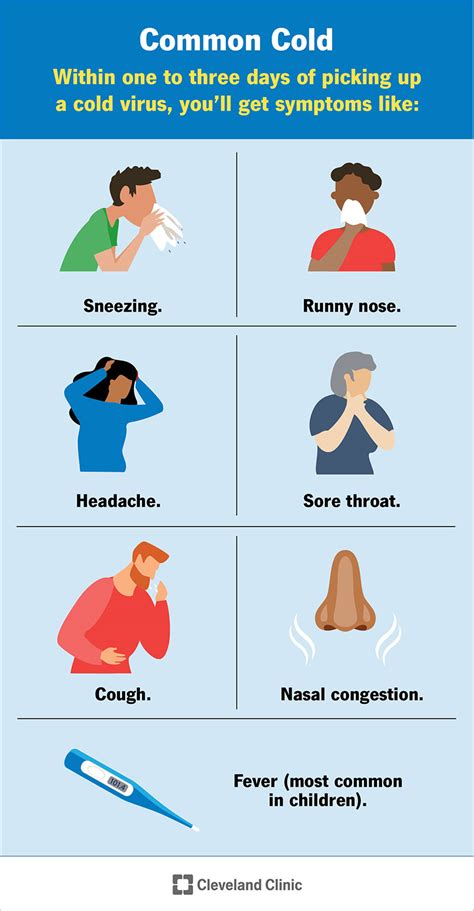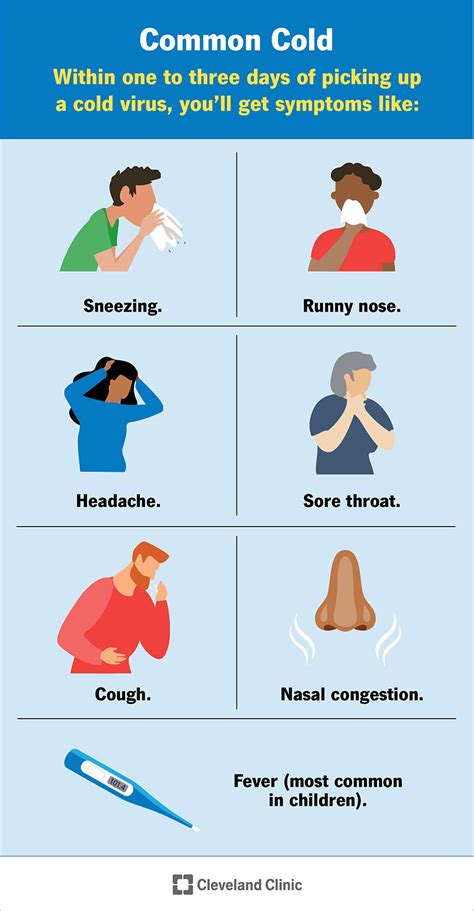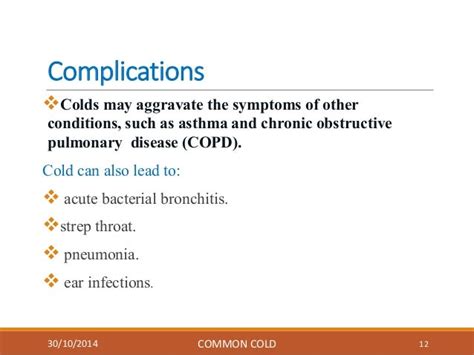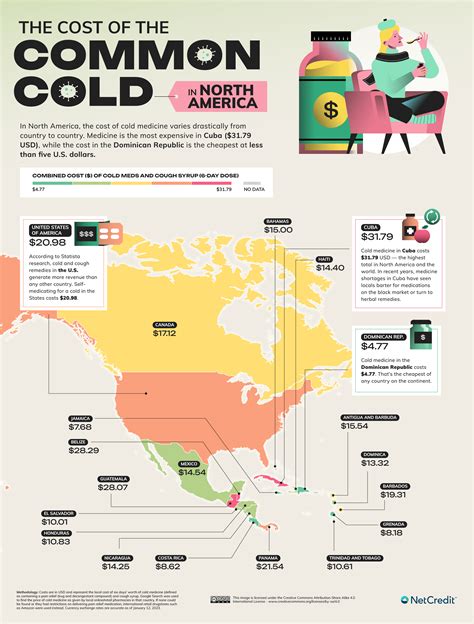Intro
Discover the common cold, its symptoms, causes, and treatments. Learn about viral infections, cold viruses, and prevention methods to alleviate runny nose, cough, and sore throat.
The common cold is a highly prevalent and widespread illness that affects millions of people worldwide every year. It is a viral infection that targets the upper respiratory system, causing a range of symptoms that can be uncomfortable and debilitating. Despite its prevalence, the common cold remains a poorly understood illness, and there is no cure for it. However, there are many ways to manage its symptoms and prevent its transmission.
The common cold is often confused with other illnesses, such as the flu or allergies, but it is a distinct condition that is caused by a specific group of viruses. These viruses, including rhinoviruses, coronaviruses, and adenoviruses, are highly contagious and can be spread through the air, by touch, or by contact with contaminated surfaces. Once the virus enters the body, it triggers an immune response that leads to the production of excess mucus, inflammation, and other symptoms associated with the common cold.
Understanding the common cold is essential for developing effective strategies for prevention and treatment. By recognizing the causes, symptoms, and transmission modes of the illness, individuals can take steps to protect themselves and others from infection. This knowledge can also help to reduce the economic and social burden of the common cold, which is estimated to cost billions of dollars in lost productivity and healthcare expenses each year.
What Are The Symptoms Of The Common Cold

The symptoms of the common cold can vary from person to person, but they typically include a combination of the following: runny nose, congestion, sneezing, coughing, sore throat, headache, and fatigue. In some cases, the common cold can also cause a fever, especially in children and older adults. These symptoms can be mild or severe and can last for several days or even weeks.
The symptoms of the common cold are caused by the immune system's response to the virus. When the virus enters the body, it triggers the production of chemicals that cause blood vessels to swell, leading to congestion and inflammation. The immune system also produces excess mucus, which can lead to a runny nose and coughing. In some cases, the common cold can also cause complications, such as sinus infections, ear infections, or bronchitis.
How Is The Common Cold Diagnosed
The common cold is typically diagnosed based on its symptoms, rather than through laboratory tests. A healthcare provider may perform a physical examination and ask questions about the patient's symptoms, medical history, and lifestyle to determine the cause of the illness. In some cases, a healthcare provider may also perform tests, such as a throat culture or a blood test, to rule out other conditions, such as strep throat or the flu.How Is The Common Cold Treated

There is no cure for the common cold, but there are many ways to manage its symptoms and prevent its transmission. Over-the-counter medications, such as pain relievers and decongestants, can help to relieve symptoms, such as headaches and congestion. Rest, hydration, and a healthy diet can also help to support the immune system and reduce the severity of symptoms.
In addition to these measures, there are also many natural remedies that can help to alleviate the symptoms of the common cold. These include honey, which has antimicrobial properties and can help to soothe a sore throat; ginger, which has anti-inflammatory properties and can help to reduce nausea and congestion; and echinacea, which is an herb that is believed to have immune-boosting properties.
How Can The Common Cold Be Prevented
Preventing the common cold requires a combination of good hygiene practices, a healthy lifestyle, and a strong immune system. Washing hands frequently, avoiding close contact with people who are sick, and avoiding touching the eyes, nose, and mouth can help to reduce the transmission of the virus. A healthy diet, regular exercise, and adequate sleep can also help to support the immune system and reduce the risk of illness.In addition to these measures, there are also many supplements and medications that can help to prevent the common cold. These include vitamin C, which is an antioxidant that can help to boost the immune system; zinc, which is a mineral that can help to support immune function; and probiotics, which are beneficial bacteria that can help to support the health of the gut and immune system.
What Are The Complications Of The Common Cold

The common cold can cause a range of complications, especially in people who are vulnerable to illness, such as older adults, young children, and people with underlying health conditions. These complications can include sinus infections, ear infections, bronchitis, and pneumonia. In rare cases, the common cold can also cause more serious complications, such as meningitis, encephalitis, and sepsis.
The complications of the common cold are often caused by the spread of the virus to other parts of the body, such as the sinuses, ears, or lungs. They can also be caused by the immune system's response to the virus, which can lead to inflammation and tissue damage. In some cases, the common cold can also cause complications due to the use of over-the-counter medications, such as decongestants, which can have side effects, such as increased heart rate and blood pressure.
How Can The Common Cold Be Managed In Different Populations
The common cold can affect anyone, regardless of age, sex, or health status. However, some populations are more vulnerable to the illness, such as older adults, young children, and people with underlying health conditions. In these populations, the common cold can cause more severe symptoms and complications, and may require more intensive treatment and management.In older adults, the common cold can cause more severe symptoms, such as pneumonia, bronchitis, and heart problems. In young children, the common cold can cause more severe symptoms, such as ear infections, sinus infections, and croup. In people with underlying health conditions, such as asthma, diabetes, or heart disease, the common cold can exacerbate these conditions and cause more severe symptoms and complications.
What Is The Economic Burden Of The Common Cold

The common cold is a significant economic burden, both in terms of direct medical costs and indirect costs, such as lost productivity and absenteeism. According to estimates, the common cold costs the United States economy billions of dollars each year, with the majority of these costs due to lost productivity and absenteeism.
The economic burden of the common cold is due to a range of factors, including the cost of over-the-counter medications, doctor visits, and hospitalizations. It is also due to the cost of lost productivity, as people who are sick with the common cold may need to take time off work or school to recover. In addition, the common cold can also have a significant impact on quality of life, as it can cause discomfort, pain, and disruption to daily activities.
What Are The Future Directions For Common Cold Research
Despite the significant burden of the common cold, there is still much to be learned about the illness, including its causes, mechanisms, and treatment options. Future research directions for the common cold include the development of more effective treatments, such as antiviral medications and vaccines; the identification of genetic and environmental risk factors for the illness; and the development of more effective prevention strategies, such as public health campaigns and vaccination programs.In addition to these areas, there is also a need for more research on the impact of the common cold on different populations, such as older adults, young children, and people with underlying health conditions. This research can help to identify the most effective treatment and prevention strategies for these populations and can help to reduce the burden of the illness.
What is the common cold?
+The common cold is a viral infection that targets the upper respiratory system, causing symptoms such as runny nose, congestion, sneezing, and coughing.
How is the common cold treated?
+The common cold is typically treated with over-the-counter medications, such as pain relievers and decongestants, as well as rest, hydration, and a healthy diet.
How can the common cold be prevented?
+The common cold can be prevented by practicing good hygiene, such as washing hands frequently, avoiding close contact with people who are sick, and avoiding touching the eyes, nose, and mouth.
What are the complications of the common cold?
+The common cold can cause a range of complications, including sinus infections, ear infections, bronchitis, and pneumonia, especially in people who are vulnerable to illness.
What is the economic burden of the common cold?
+The common cold is a significant economic burden, with estimates suggesting that it costs the United States economy billions of dollars each year in direct medical costs and lost productivity.
In conclusion, the common cold is a highly prevalent and significant illness that affects millions of people worldwide each year. Understanding the causes, symptoms, transmission modes, and treatment options for the common cold is essential for developing effective strategies for prevention and management. By recognizing the importance of good hygiene practices, a healthy lifestyle, and a strong immune system, individuals can take steps to protect themselves and others from infection. We invite you to share your thoughts and experiences with the common cold in the comments section below, and to explore other resources and articles on this topic to learn more about how to prevent and manage this illness.
